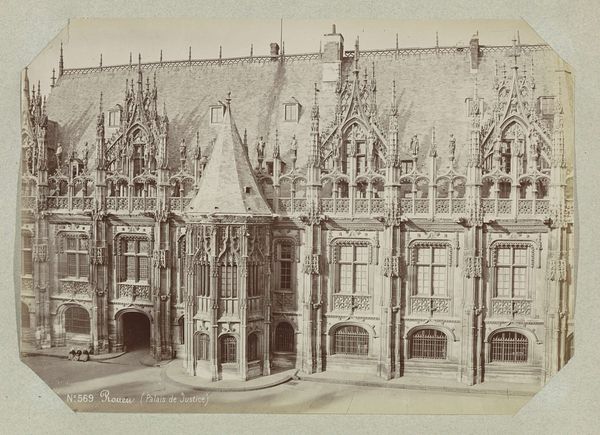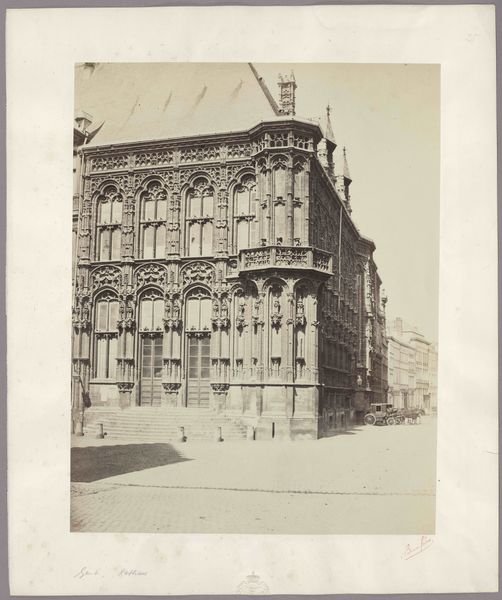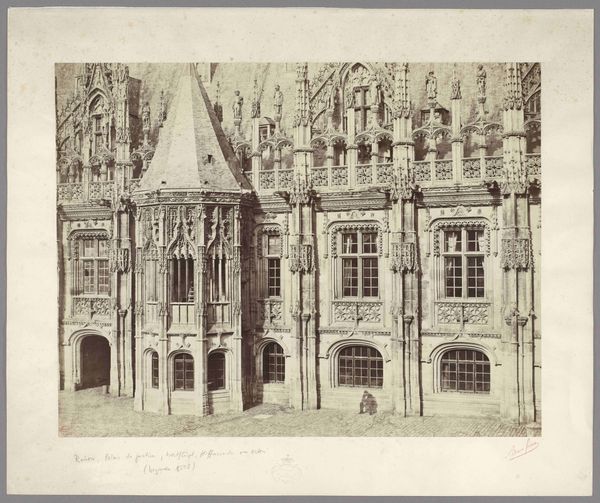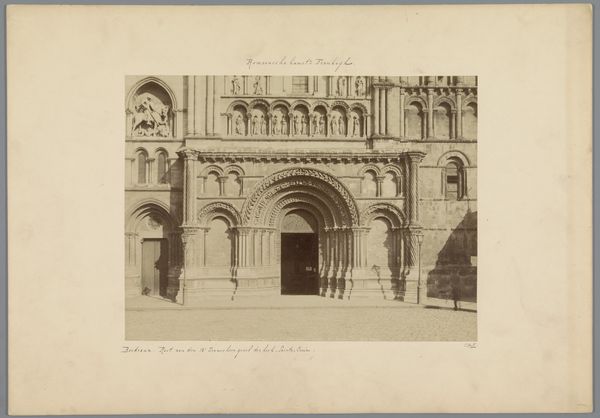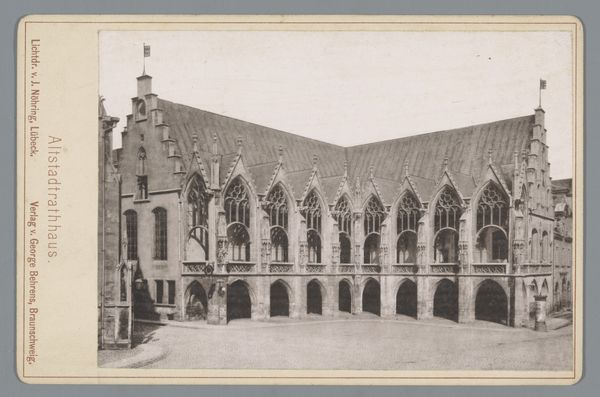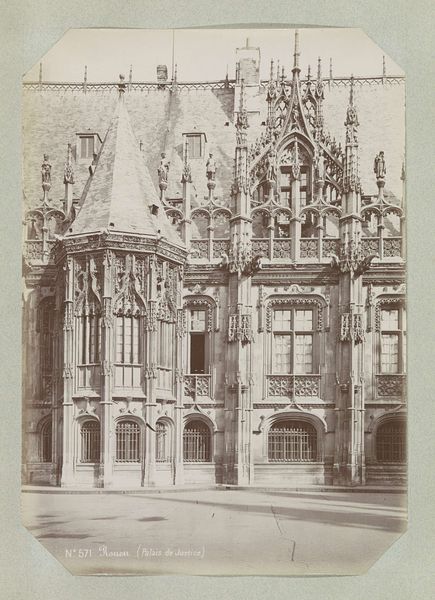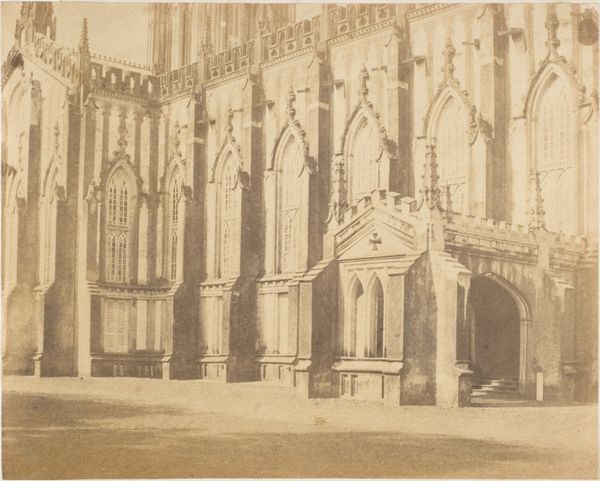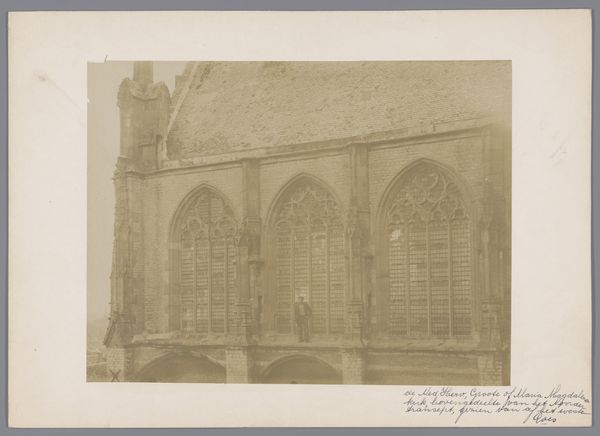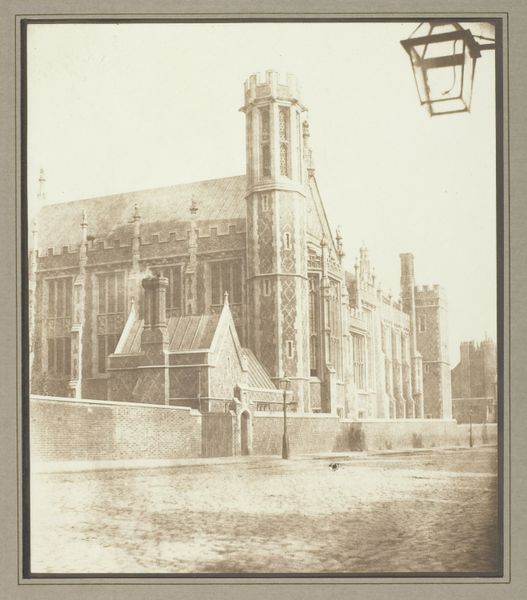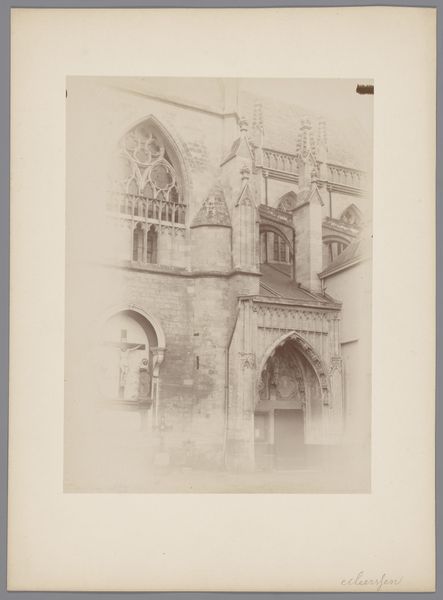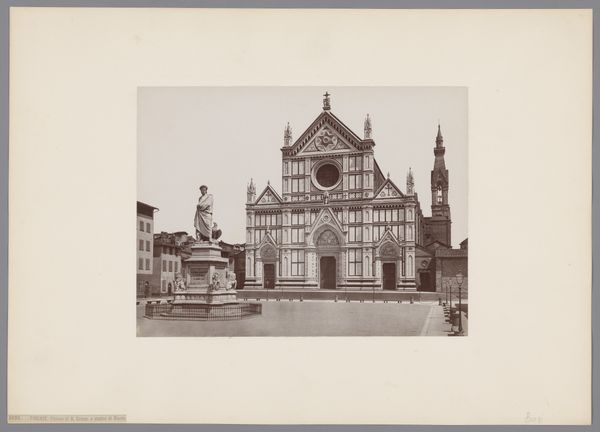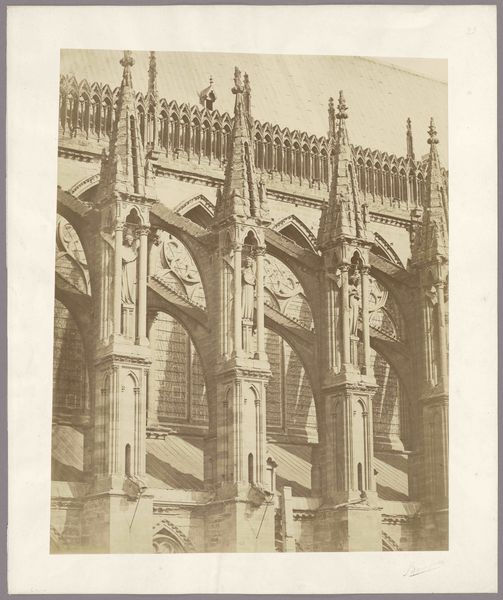
albumen-print, paper, photography, albumen-print, architecture
#
albumen-print
#
16_19th-century
#
landscape
#
paper
#
photography
#
albumen-print
#
architecture
#
realism
Copyright: Public Domain
Curator: This is an albumen print from 1857 by Bisson Frères titled "Leuven, The Town Hall," now residing here at the Städel Museum. It's a remarkable example of early architectural photography. Editor: It’s quite imposing. The symmetry, the sharp lines… it almost feels stage-like, like a backdrop for a grand historical drama. And the monochromatic tones emphasize the stone's texture beautifully. Curator: Indeed. Photography like this played a critical role in how Europeans viewed and documented civic structures. Think about the growth of urbanism in the mid-19th century and how imagery contributed to civic pride. Editor: I'm drawn to the process itself. Albumen printing meant coating paper with egg whites – imagine the sheer quantity required for larger prints! And the final image, rendered from a glass negative... it represents significant labor. We often overlook that. Curator: A very good point. Beyond the artistry, we need to consider the political weight of buildings like Leuven's Town Hall and the intended effect that photographs had on shaping collective memory. Its Gothic revival style projects ideas of legitimacy. Editor: The materiality adds to that sense of legitimacy, too. It’s interesting to consider how such careful craft elevates this photo above mere reproduction; it becomes a thing of worth, intended to reflect the civic grandeur depicted within it. I am thinking of the social role and context involved in making this photo: What motivated the decision to immortalize this architectural marvel through an albumen print? Curator: I imagine the rising middle class, increasingly empowered within that municipality, sought tangible reminders of their rising prominence. The image broadcasts that wealth to wider audiences beyond the immediate residents. It visualizes their civic identity. Editor: A perfect example of photography not just capturing reality, but constructing it, socially and materially. Thinking of today's viewers, the labor involved in the craft helps to slow the perception of art, and prompts considering the town's symbolism. Curator: Ultimately, this image acts as a carefully composed message. It links architectural innovation with civic ambition, solidifying its position within Belgium's historical narrative and beyond. Editor: Absolutely. Looking at the image through the lens of material practices deepens our awareness of its function and adds nuanced perspectives on its political power. It encourages a tangible approach that helps unveil hidden socio-economic realities.
Comments
No comments
Be the first to comment and join the conversation on the ultimate creative platform.
